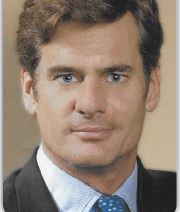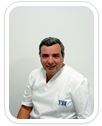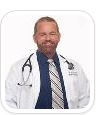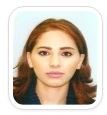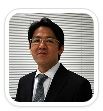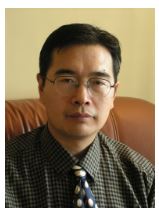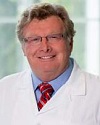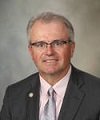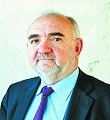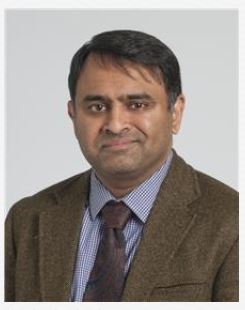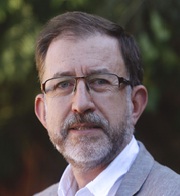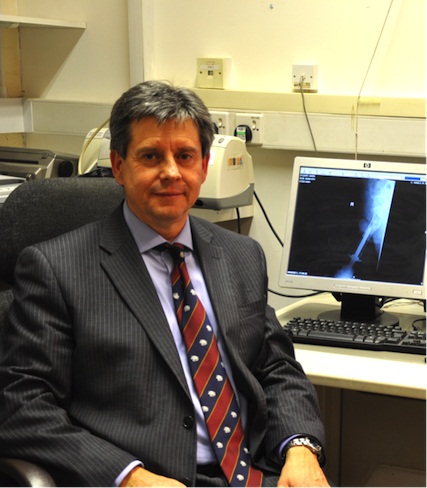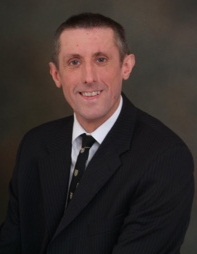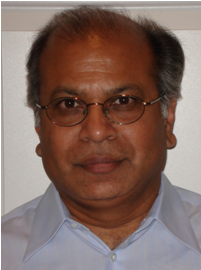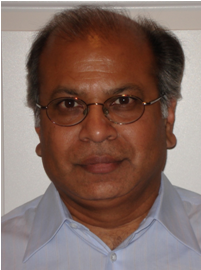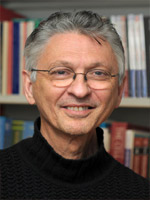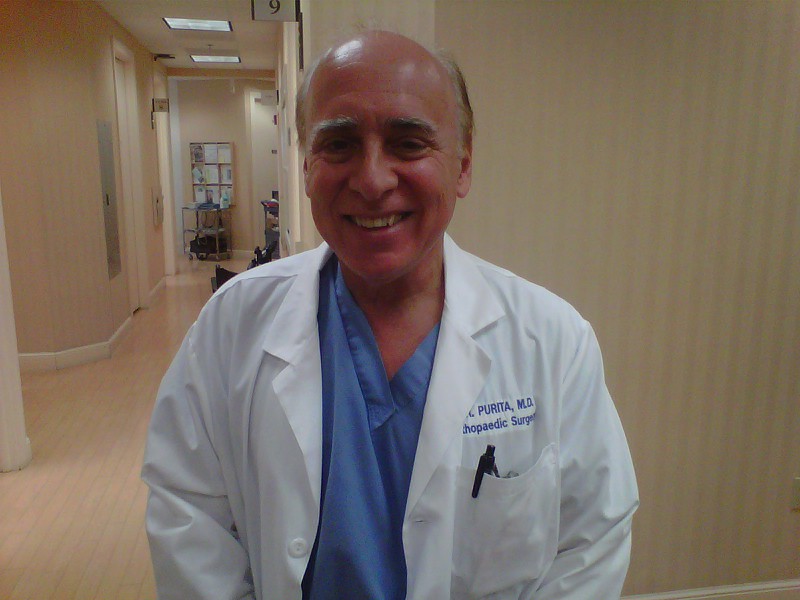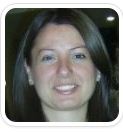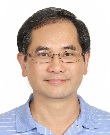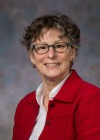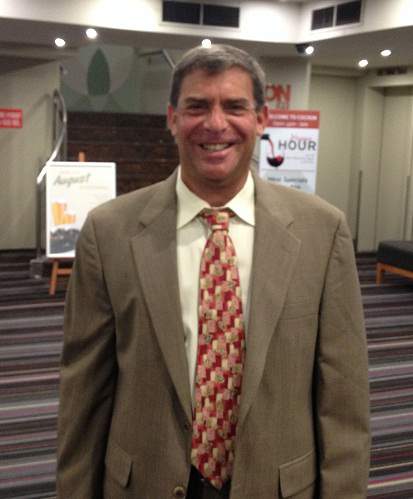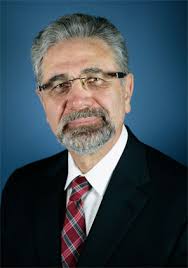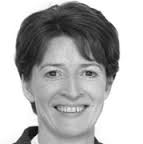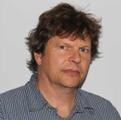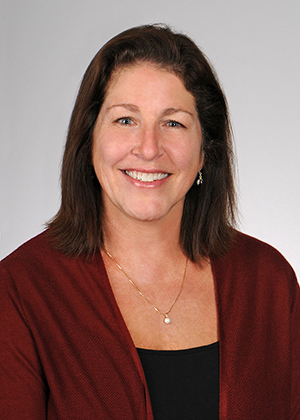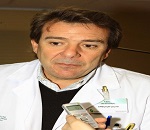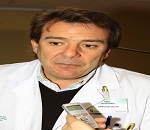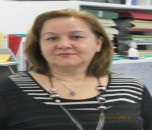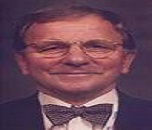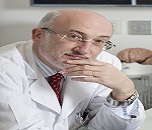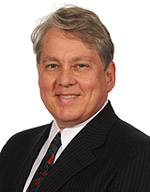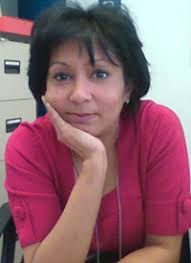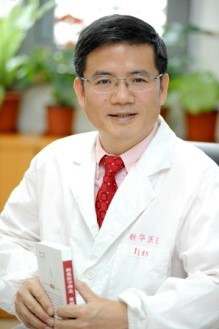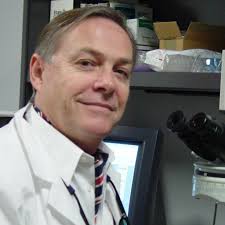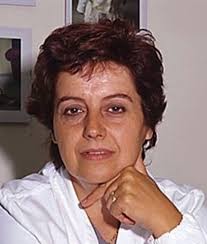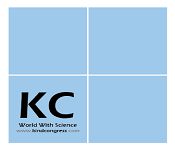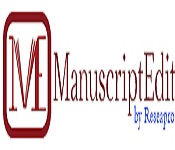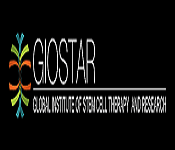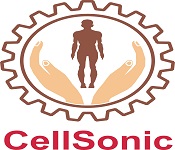Theme: Redefining Health Care through Tissue Engineering
Bone Tissue Engineering 2019
BTE-2019 invites all the interested participants to attend the International Conference on Biomaterials for Bone Tissue Engineering scheduled to be held on March 18-19, 2019 in Dubai, UAE. The theme of conference is “Redefining Healthcare through Tissue Engineering” where there will be an analysis of recent research and innovations in Bone Tissue Engineering to ponder over the growth, credibility, advancements and future steps to be taken in the field of Bone Tissue Engineering.
About Organizers
ME Conferences organize conferences, symposia and workshops, related to current international research interest and is committed to serve the global scientific community in the development and distribution of high quality conferences with the mutual support of research communities, by empowering scientists to regularly meet and discuss topics with frontrunners in the field. These conferences cover diverse top ranked specialties and budding aspects of important and relatively broad subject areas.
Why to Attend?
BTE 2019 has the platform to fulfil the needs in the transformation of this science in hope, to serve promptly with solutions to all the needs. BTE-2019 will have participants from across the world to discuss the current trends, innovations and goals in the field on biomaterials.
Scientific Sessions
Bone tissue engineering comprises recent researches and findings in bone and tissue regeneration technologies, stem cells and transplantations and other advancements in biomaterials and tissue science. BTE 2019 will be a great platform for researchers, scientists and young researchers to share their current findings in this field of applied science and material sciences. The major scientific sessions in BTE-2019 will focus on the latest and exciting innovations in prominent areas of biomaterials and bone & tissue science.
Top Reasons to Attend
- A unique opportunity to discuss issues of importance and relevance to advancing bone tissue engineering through continuous professional development.
- The conference is of interest to all those in the Continuing Education/Professional Development experience, developers, sponsors, faculty, regulators, government, professional associations, pharmaceutical industry, communication companies, and allied health care providers and organizations from around the world.
- Meet key decision makers in this field and learn about the latest innovations, technologies, trends, and developments in this field.
- Network and gain access to one of the world's fastest growing markets.
- A momentum is growing worldwide that recognizes the integral role of continuing professional development in Bone Tissue engineering, and the value of sharing experiences and knowledge in an international, collegial forum.
- The conference facilitates participant access to high-quality educational programs, internationally significant research and development, and world-renowned leaders in the biomedical field.
- This is the only event featuring renowned speakers and delegates and expertise on the topics you care about most.
Overview of Bone Tissue Engineering
An important area of Biomaterials for bone tissue engineering is progressively significant as patients experience potential morbidities related to modern therapies. Bone Tissue Engineering is the study of bone and spinal cord, numerous of which are very dangerous and life-threatening (osteoporosis, osteopenia, bone cancer, benign tumors, osteosarcoma, osteolysis, hypocalcemia).
Track-1: Bone Tissue Engineering
Capable improvements in the multidisciplinary field of tissue designing have yielded a novel arrangement of new tissue parts and execution techniques .Bone Tissue Engineering is the understanding of tissue formation, bone fractures, bone structures, bone mechanics, as it aims to motivate new functional bone tissues. It is also explained in the words, successfully knowledge of bone biology, regenerate or repair bone and it development quite essential. Bone defect and bone regeneration are also under goes the bone tissue engineering. Lack of bone is called as a bone defect. Since bone defect arises from trauma for the treatment of osteomyelitis, this will be accompanying major tissue injury. The goal of tissue engineering is improve damaged tissues or whole organs. These are several types of cell like allogeneic, stem cell, autologous cell and many biomaterials used in tissue engineering.
Track-2: Biomineralization
The complete conversion of organic substance to inorganic substance is called as Biomineralization. Biomineralization is generated by especially in living organisms, such as teeth and bone. This is the process by which living organisms produce minerals or stiffen existing tissues. Those tissues are called mineralized tissues.in this process over 60 different types of minerals have been identified. An example includes diatoms, carbonates, and silicates in algae, carbonates and calcium phosphates. Living organisms have been producing mineralised skeletons for the past 550 million years. The structures of these biomaterials are controlled from the nanometre to the macroscopic level, resulting in complex architectures that provide multifunctional properties.
Track: Scaffolds in Bone Tissue Engineering
The structure will be providing on support is called as a scaffolding. It is also explained in medical technology use a microscopic apparatus made of fine polymer fibres is called as a scaffold. The best example of scaffolding in biology is the repair of bone fracture. The temporary structure is made by the body called the pro callus. These scaffolds are different types those are Nano-scaffold and fibrin scaffold.
Nano-scaffolding is a medical process used to regrowth of bone and tissue, including organs. The structure of Nano-scaffolding is a three-dimensional structure composed of polymer fibers very small that are scaled from a nanometre scale. Nano-scaffolding has been used to regrow burned skin. The process cannot grow complex organs like hearts.
A fibrin scaffold is a network of protein. This can be hold together and a support a verity of living tissues.it is produced generally in the time of injury, but also can be engineered as a tissue substitute to speed healing. Fibrin consists of the blood proteins fibrinogen which is participating in blood clotting.it has a broad use in biomedical application.
Track-3: Biomaterials
Materials exploited in contact with organisms, microorganisms and living tissues is called as a biomaterials. As science biomaterials is about 50 years old. The study of biomaterials is called biomaterial engineering or biomaterial science. Biomaterial engineering encompasses elements of biology, medicine, material science, chemistry and tissue engineering. Biomaterials are different from the biological materials, such as bone, that is produced by a biological system. Biomaterials are regularly used and additionally adjusted for a medical application. Biomaterials are utilized each day in dental application, bone plates, medication delivery, surgery and tissue designing. A biomaterial is a substance that has been designed to behave with organic structures for a clinical reason - either a therapeutic or a diagnostic one. Biomaterials are also used on a day by day foundation in dental applications, surgical operation, and drug transport. New biomaterials have been presented since 1971.
Track-4: Nanotechnology in Bone Tissue Engineering
Nanotechnology is currently being utilized for regenerative medicine and tissue engineering. Nanotechnology represents a major frontier with potential to significantly advance in the field of tissue engineering. Nanotechnology can be used to create nanopatterns, controlled release nanoparticles and nanofibers with application in tissue engineering, since biomaterials to be engineered is of nanometre size like extracellular fluids, cardiac tissues and bone marrow etc. in this technology several major areas of research in bone regeneration: 1) Nanoparticle-based methods for delivery of bioactive molecules, growth factors, and genetic material, 2) Nanoparticle-mediated cell labeling and targeting and 3) Nano based scaffold construction and modification to enhance physiochemical interaction, mechanical stability. Nanotechnology is the ultimate translation to the clinical environment it will be allow for the improvement of therapeutic outcomes in patients with large bone deficits and osteodegenerative diseases.
Track-5: Bone Tissue Sarcoma
Cancer is the maximum terrible disorder. Bone sarcoma is sometimes just called bone cancer. “A bone cancer means a neoplastic growth of tissue in bone”. This bone sarcoma is classified in to two types those are primary bone tumour and secondary bone tumour.” Primary bone tumour” which originate in tissues and bone or bone derived cells and “secondary bone tumour “which have spread from other organs, most commonly carcinomas of the breast, lung, and prostate The objectives of bone tumour treatment can incorporate at least 1 of these things 1) Remove the malignancy in the bone 2) Remove or demolish tumours in different parts of the body 3) Kill or stop the development of bone disease cells 4) Prevent the malignancy's arrival.5) Ease manifestations from the tumour, for example, torment or weight on organs. The treatment of bone sarcoma depends on the type of tumour and those treatments are surgical treatment, medication and chemotherapy and radiotherapy.
Track-6: Stem Cell
Stem cells are biological cells; these are found in multicellular organisms. Stem cells are differentiate into other type of cell and can divide to produce same type of stem cells. Stem cells are two types those are embryonic stem cells and adult stem cells. The Embryonic stem cells which is founded from the inner cells and the adult stem cells which are found in various tissues. Adult stem cells are usually used in various medical therapies. Adult Stem Cells can also be taken from umbilical cord blood just after birth. Stem cell therapy is the treatment of stem cell disease. In adult organisms stem cells are act as a repair system for the body.
Track-7: Biomedical Engineering
Biomedical engineering is also known as a bioengineering. It is the application of engineering principles and design concepts to biology and medicine for healthcare purpose. This field is close the gap between medical and engineering, combining the problem solving and designing skills of engineering with medical biological sciences to advance health care treatment, therapy and including diagnosis. And also includes under the scope of a biomedical engineer is the management of present medical equipment within hospitals while it is relevant to industry standards. This involves equipment recommendations, routine testing, procurement and preventative maintenance and disposal. This is also known as a Biomedical Equipment Technician (BMET) or clinical engineering.
Track-8: Bone Regeneration
Bone regeneration is a complicated physiological technique for formation of bone. Bone regeneration is seen during of fracture recovery. Bone damage and bone loss may occur as a result of infectious diseases, genetic conditions, tumours and trauma. Bone repair and healing involves integrate activity of living cells, native tissues and give itself to the incorporation of naturally derived or biocompatiable synthetic scaffolds, damaged tissues. These are several modalities of bone regeneration including tissue engineering, guided bone regeneration, bone grafting and distraction ontogenesis, loose fibula vascularized graft, osteoprogenitor cells, osteoconductive scaffolds and allograft implantation.
Track-9: Tissue Repair &Regeneration
Tissue regeneration means the regrowth of a damaged organ part from the remaining tissue. In adults can regenerate some organs such as the liver. If part of the liver is lost by injury, the liver grows its original size, not its original shape. In many different animals such as human’s tissue regrowth may be observed. Like lizards: the tail of lizard if reduce can develop successfully all another time. That is an example of tissue repair and regeneration. Tissue repair occurs in two major ways by fibrosis and by regeneration. Fibrosis involves repair by fibrous connective tissue where regeneration replaces destroyed tissue with the same cells.
Track-10: Dental Tissue Regeneration
Dental regeneration is a stem cell based regenerative medicine procedure in the field of stem cell biology and tissue engineering to replaced damaged teeth by regrowing them from autologous stem cell. Dental biomaterials are applied to loss or damaged tooth. British researchers have created material that can be used as an artificial dental enamel to treat and prevent tooth sensitivity. The scientists are create the enamel by using of biopolymer to trigger and guide the regrowth of apatite nanocrystals, but the main mineral found in bone and dental enamel. Those biopolymers combines they form larger macroscopic structures with the properties of dental enamel such as, hardness, acid resistance and stiffness. Dental inserts are the whole and spherical structures made up of titanium, which is applied as a substitute for any damaged tooth. Fake tooth are called dental prostheses.
Track-11: Clinical Translations
The primary thrust of tissue engineering is the clinical translation of biologics or scaffolds to reconstruct tissue defects. Medical translation of tissue engineering plans from academic research has been minimum 27 years records of bone tissue engineering. Mostly clinical translation is use in the treatment of cell therapy. Tissue engineering has raised the hopes of many surgeons to restore the functionality, to provide products of organs and tissues. The orthopaedic surgeons could use these products to replace missing tissues due to infection, trauma or surgical removal of neoplastic tissues. Although research has shown number of publications and large interest in tissue engineering in this field there are still very few products available. In this field looking at cartilage repair, spinal surgery, bone defects, biomaterials, muscle repair.
Track-12: Organ Engineering
Organ engineering is a theoretical alternative to transplantation. Tissue engineering and regenerative medicine is an exciting research area that aims at regenerative alternatives to remove tissues for organ transplantation with soft tissues. This organ engineering has attracted a number of interests as a modern day healing that it could success over the drawbacks concerned the present day organ transplantation and artificial organs which have been additionally focus at changing broken or misplaced organs or tissues. Whole organs could be obtain from patient's cells and transplanted similar organs to overcome organ donor shortage, and the need for immunosuppression.
Track-13: Biomimetics in Bone Tissue Engineering
The term biomimicry and biomimietics derive from Greek. Biomimetics is very closely related in the field of bionics. Biomimetics is the limitation of the systems, models and elements of nature for the purpose of solving complex human problems. Biomimetic scaffolds may provide a novel platform for phenotypically stem cell differentiation and stable tissue formation. Biomimetics has given rise to new technologies inspired by biological solutions at nanoscales.
Track-14: Biofabrication in Bone Tissue Engineering
Biofabrication is an automated production of organs and tissue that deals with health challenge in medicine. Biofabrication research is that leads to the fabrication of advanced biological models, non-medical biological systems and medical therapeutic products. Biofabrication technology is a platform for a broad range of tissues such as nervous, cartilage, blood vessels and skin, as well as complete organs such as kidney, liver and the heart. It is used for 3D printing which is also known as the theory of additive manufacturing. Its main objective is to merge cells and fibres into an independent construct that can substitute wounded tissue.
Track-15: Current Trends in Bone Tissue Engineering
Over the past 20 years, bone tissue engineering has been the issue of considerable research in the time of regenerative medicine. The current trends include the technical in surgical and orthopaedic implants techniques for bone regeneration. For bone regeneration and tissue engineering strategies contain gene, protein and cell delivery to the defective bone sites. GAM (Gene-activated matrices) is shown considerable outcomes with bone regeneration. In GAM technology, cytokines and growth factors could be delivered as plasmid genes, not recombinant proteins which lead to in situ osteogenic protein production, thus inducing bone repair and osteogenesis. Overall a common platform for clinical experience, commercial application and biological principles is necessary for the technology development.
Track-16: Challenge of Bone Tissue Engineering
Over the last many years there was a large amount of innovation and studies into regenerative techniques and tissue engineering for the craniofacial region. Current studies indicate that many kinds of implant biodegradable scaffolds can also play a useful role within the medical trails of craniofacial pathological situations. Craniofacial surgery we can highlight each modern-day surgical methods for craniofacial reconstruction and recent advances within the subject of bone tissue engineering. In so many cases, the correction of bone defects requires extensive surgical intervention involving the use of bone-grafting techniques and other procedures in which healing is slow, there is a high risk of infection and pain - with no guarantee of complete correction of the defect. Therefore, the search for surgical alternatives continues to present a major challenge in orthopaedic trauma. By arising of bone defect two techniques are used those are RIA technique and Masquelet technique. Both in the Masquelet technique and in RIA, osteosynthesis is usually needed.
Track-17: Future Scope-Biomedical Technology
Biomedical innovation guarantees number of new improvements. Biomedical technology is the one of the brightest career these days. More doctors are utilizing the power of computer and other devices such as sonography devices and MRI scans etc. biomedical technology is applied for physics as well as biology and chemistry to develop devices and products which are used in the treatment and diagnosis of diseases. The biomedical engineers work with other healthcare professionals including nurses, technicians, physicians and therapists. There are different areas of specialization within the field of biomedical technology such as: clinical engineering, cellular and genetic engineering and tissue engineering.
Clinical Engineering: in this technique involves maintaining computer database and developing of medical equipment and instruments record in hospitals.
Cellular and Genetic Engineering: in this technique involves developing devices and looking at medical problems at the microscopic level to deliver medicines to inhibit diseases and promote healing.
Tissue Engineering: in this technique involves the principles of engineering and biology to develop tissue substitutes to restore, improve the functions of damaged human tissues.
Market Analysis
Summary
International conference on Biomaterials for Bone Tissue Engineering -2019 welcomes attendees, presenters, and exhibitors from all over the world to Dubai. We are pleased to invite all interested delegates and speakers to attend the International Conference on Biomaterials for Bone Tissue Engineering (Bone Tissue Engineering 2019) which is scheduled to be held on March 18-19, 2019 in Dubai.
SCOPE & IMPORTANCE
Globally, people are now more aware about their health. The field of Tissue Engineering has developed as an important approach to the clinical therapy of damaged bone due to trauma, congenital anomalies or tumor resection. Besides growth factors and bone forming cells, we have very recognized that the development of bone tissue engineering is directly related to changes in materials technology. However, after experiencing the rapid development of bone tissue engineering over the past several decades, we still currently face a great challenge to design a new platform that can integrate bioscaffolds and growth factors or stem cells into biomimetic bone substitutes with new technologies for reconstruction of large-size orthopedic defects .The Tissue Engineering and Regeneration market is mainly segmented into three types: biological materials, synthetic and genetically modified. The biological materials are derived into collagen and xenogenic tissue. Synthetic materials are further categorized into scaffold, polymers and hydrogel technology. These two segments are discussed in detailed for the forecast period. Biomaterial market is mainly segmented by the materials from which they are made, for example: Metallic, polymeric, composite, ceramic, and natural. In addition to the segmentation by material type, medical biomaterials can also be examined by therapeutic area as follows: Orthopedic, Dental, Immunology and infection, Plastic surgery, Oncology. The market is segmented by the region into the Europe, America and Asia pacific.
MARKET ANALYSIS
The global tissue engineering market is forecasted to grow at a CAGR of 13% to reach $11.5 billion by 2022 from its current value of $ 5.91 billion in 2017. According to reports, there are more than 900 million surgeries performed for bone reconstruction and replacement. The factors that fuel the growth in tissue engineering are growing incidences of chronic diseases, accidents, and trauma.
Most commonly used tissue engineering services are inserting medical devices, surgeries, and transplantations. The tissue and bone engineering markets have huge potentials due to profound advancements in the technology, which include 3D tissue engineering, 3D bio-printers, which design and imprint in-vitro implants and can also be used as a replacement of embryotic cells with proliferative stem cells.
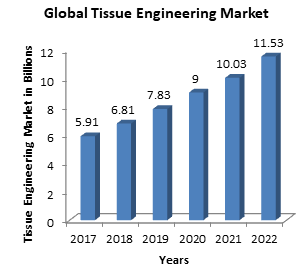
The global biomaterials market is forecasted to grow at a CAGR of 16.0% to reach $149.17 billion by 2021 from its current value of $62.1 billion in 2016.Biomaterials can be segmented by the materials from which they are made Metallic, Ceramic, Polymeric, Natural, and Composite.
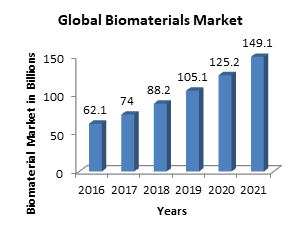
The Global Regenerative Medicine Market is forecasted to grow at a CAGR of 23.2 % to reach $66 billion by 2022 from its current value of $ 62.1 billion in 2016.There are over 700 regenerative medicine companies globally at present the total regenerative medicine market has more than 500 products commercialized. The regenerative medicine market contains a number of key technology submarkets including: BioBanking, Biomaterials, Tissue Engineering, and Cell therapy including stem cells.
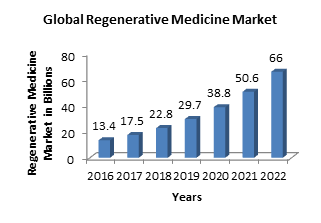
The global stem cell market is forecasted to grow at a CAGR of 9.2% to reach $15.63billion by 2025 from its current value of $ 7.0 billion in 2017. Scientists are involved in discovering novel methods to create human stem cells. This is to address the growing demand for stem cell production for potential investigation in disease management. This factor is certainly expected to accelerate the development of regenerative medicine, thus heavy industrial growth. Companies are expanding their cellular therapy portfolio, understanding the future potential of this arena in the treatment of spinal cord injury Parkinson's disease, Alzheimer’s disease, type 1diabetes and others.
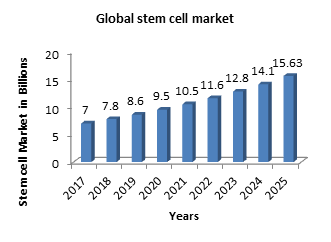
The global orthopedic technologies Market is forecasted to grow at a CAGR of 4.7% to reach $56.2 billion by 2023 from its current value of $41.9 billion in 2017. The report covers the present situation and the growth prospects of the global orthopedic devices market for 2015-2020. To calculate the market size, the report considers the revenue generated from the sales of the following device segments: Trauma and extremities, Spine, Knee, Hip, Foot and ankle.
The report of Global Orthopedic Devices Market 2016-2020, has been prepared based on a full market analysis with inputs from industry experts. The report shows the market landscape and its growth prospects over the coming years.

The global Soft Tissue Repair Market is forecasted to grow at a CAGR of 7.3% to reach $10.73 billion by 2025 from its current value of $5.82 billion in 2017. According to reports there is growing number of orthopedic surgeries and trauma patients is one of the key factors estimated to drive revenue growth in coming few years.
Soft tissue comprises of ligaments, tendons, muscles, synovial membranes, fibrous tissue, skin, nerves and others which protect organs enable movement and support bones in the body. Injury to the soft tissues can cause pain and also may stop movement of the bones, which if left untreated can lead to chronic pain. Most of the injuries are caused because of strain of trauma on the muscles.

Why Dubai?
Dubai is one of the most populous and largest city in the United Arab Emirates and is Located on the southeast coast of Persian Gulf is the capital of the Emirate of Dubai; the country is being all of seven emirates. It is the most population in the UAE and the second-largest land territory by area after Abu Dhabi. Dubai's lure for tourists is based mainly on shopping, but also on its possession of other ancient and modern attractions and is also considered as the dynamic nucleus of the Arabian Gulf region. Dubai conferences indeed play a vital role in promoting scientific information and thoughts all over the world. The conferences taking part here would promote a group of scientific ideas among challengers belonging to diverse areas of science and technology.
Conference Highlights:
- Bone Tissue Engineering
- Biomineralization
- Scaffolds in Bone Tissue Engineering
- Biomaterials
- Nanotechnology in Bone Tissue Engineering
- Bone Tissue Sarcoma
- Biomimetics in Bone Tissue Engineering
- Biofabrication in Bone Tissue Engineering
- Dental Tissue Regeneration
- Stem Cells
- Organ Engineering
- Biomedical Engineering
- Current Trends in Bone Tissue Engineering
- Bone Regeneration
- Tissue Repair &Regeneration
- Clinical Translations
- Challenge of Bone Tissue Engineering
- Future Scope-Biomedical Technology.
Why to Attend?
International Conference on Bone Tissue Engineering tends to bring together worldwide distinguished academics in the field of Orthopaedic Surgeons, Bone Oncologists, Neurooncologist, Public Health professionals, Clinical Researchers, Biomaterials Researchers, Scientists, Materials Science and Nano Science Faculty, Academic scientists, Industry researchers, Scholars to exchange about state of the art Research and Technologies and to bring discoveries of Bone Tissue Engineering. Attending International Conference is for the Professional Development and to understand the current state of research and the challenges to future discovery.
The aim of the Conference is to provide a platform to academicians and practitioners from multiple disciplines to debate and deliberate on social change that is encompassed by Innovation and Technology.
Who Should Attend
- Orthopaedic Surgeon
- Clinical Researchers
- Material Science Students
- Biomaterials Researchers
- Materials Science and Nano Science Faculty
- Materials Science and Nanomaterial’s Associations and Societies
- Companies related to Biodegradable materials industry
- Scientists
- Medical Devices Manufacturing Companies
- Eminent Personalities
- Directors
- CEO
- President
- Vice-President
- Organizations
- Professors
- Research Scientists
- Students
- Lecturers
- Professionals
- Association Presidents
- Business Entrepreneurs
- Medical Executives
- Rehabilitation Specialists
- Head of Department
- Industrial Researchers
- Nurses
Target Audience:
Academia: 65%
Industry: 25%
Others: 10%
Top 10 Hospitals in the United States for Orthopaedics:
- Cleveland Clinic
- Rothman Institute at Thomas Jefferson University Hospitals
- Rush University Medical Center
- Massachusetts General Hospital
- UCSF Medical Center
- NYU Langone Orthopaedic Hospital. New York
- Cedars-Sinai Medical Center. Los Angeles
- Johns Hopkins Hospital. Baltimore
- Duke University Hospital. Durham
- Northwestern Memorial Hospital. Chicago
T0p 10 Biomedical Engineering Schools Worldwide:
- The Harvard School of Engineering and applied sciences
- Rochester Institute of Technology
- The University of Sheffield
- ETH Zürich
- The Swiss Federal Institute of Technology in Lausanne
- The Georgia Institute of Technology
- The University of Cambridge
- University of Twente
- The John Hopkins School of Medicine
- The Duke University
Major Cleveland Clinics and Hospitals for Orthopaedics Dubai:
- Dubai Bone and Joint Center
- Dr Rami Hamed Center
- Orthosports Medical Center
- Burjeel Hospital for Advanced Surgery Dubai
- Dr Humeira Badsha Medical Center - Orthopedic and Rheumatology
- JTS Medical Centre
- Medcare Orthopaedics & Spine Hospital
- Prime Medical Center
- Abbara Polyclinic
- Aster Specialist Clinic for Orthopaedics & Physiotherapy, Al Qusais
- Dr. Ahmad Kazim Clinic
- Dr. Rajan's Orthopaedic Speciality Clinic
- California Chiropractic & Sports Medicine Center
- Prime Medical Center, Jumeirah - Dubai
- Osteopathic Health Centre Dubai
- BR Medical Suites
- Edrees Medical Prosthetic And Orthotic Center
- American Spine Center
List of Drugs approved by the FDA for use Orthopedics/Orthopedic Surgery
- Strensiq (asfotase alfa)
- Otezla (apremilast)
- Xgeva (denosumab)
- Rayos (prednisone)
- Amrix
- Xgeva (denosumab)
- Skelid (tiludronate disodium)
- Fosamax
- Votrient (pazopanib)
- Seprafilm
Funds Providing Organisations:
- International Society of Orthopedic Surgery and Traumatology (SICOT)
- Instiitute for Global Orthopaedics & Traumatology (IGOT)
- American Academy of Orthopaedic Surgeons (AAOS)
- Orthopaedic Research and Education Foundation (OREF)
- Royal National Orthopaedic Hospital Trust (NHS)
- Orthopaedic Research Charity UK
- Orthopaedic Trauma Association
- Orthopaedic Research & Education Foundation
- Canadian Orthopaedic Foundation
- Osteoarthritis Research Society International
- North American Spine Society
- The Association of Bone and Joint Surgeons
- Spine Canada
- American Orthopaedic Foot & Ankle Society
- British Orthopaedic Association
Who Should Sponsor/Exhibit:
- Basic and Translational Laboratory Researchers
- Hospitals
- Educational Institutes
- Research Centers
Benefits of Attending:
- Networking Opportunities, Grow Your Professional Network
- Build Your Knowledge Base
- Expand Your Resources
- Meet Experts & Influencers Face to Face
- Learning in a New Space
- Break Out of Your Comfort Zone
- New Tips & Tactics
- Greater Focus
- Top Industries Representation
- Abstracts will be published in the conference souvenir and respective International journals
- Each Abstract will receive unique (DOI) Number provided by Cross Ref
- Laudable talks by the top-notch of the Global Scientific Community
- The Serendipity of the Random Workshop
- Will be felicitated with International Organizing Committee Member (IOCM)
- Remarkable Awards and Global Recognition to Meritorious Researchers
Major Associations and Societies of Bone Tissue Engineering Worldwide:
USA & America
- Tissue and Cell Engineering Society (TCES)
- Society for Tissue Engineering and Regenerative Medicine.
- Korean Tissue Engineering and Regenerative Medicine Society.
- The Japanese Society for Tissue Engineering.
- The Australasian Society for Biomaterials and Tissue Engineering
- New York Stem Cell Foundation
- American Academy of Anti-Aging Medicine
- American College of Medical Genetics (ACMG)
- American Board of Medical Genetics (ABMG)
- American Society of Gene Therapy (ASGT)
- Canadian College of Medical Geneticists
- Canadian Collaborative Group for Cancer Genetics (CCGCG)
Asia Pacific & Middle East
- The Japanese Society for Tissue Engineering
- Korean Tissue Engineering and Regenerative Medicine Society
- Genetics Society of Korea (GSK)
- Korean Society of Human Genetics
- Japan Society of Gene Therapy
Europe
- European Society for Artificial Organs
- European Association of Tissue Banks
- Association of Genetic Nurses and Counsellors (AGNC), United Kingdom
- British Society for Human Genetics (BSHG)
- Clinical Molecular Genetics Society (CMGS), United Kingdom
Related Bone Tissue Engineering Conferences
- 10th Tissue Repair and Regeneration Congress, Helsinki, Finland, June 10-12, 2019
- Global Conference on Tissue Engineering and Regenerative Medicine, Amsterdam, Netherlands, March 25-26, 2019
- Annual Congress on Advanced Tissue Science and Regenerative Medicine, Amsterdam, Netherlands, April 15-16, 2019
- 11th International Conference on Tissue Engineering & Regenerative Medicine, Holiday Inn Rome Aurelia, Rome, Italy, October 18-20, 2018
- International Conference on Biomaterials & Tissue Engineering, Hyatt Place, Amsterdam, Netherlands, December 03-04, 2018
- 11th International Conference on Tissue Engineering & Regenerative Medicine , Holiday Inn Rome Aurelia, Rome, Italy, October 18-20, 2018
- Annual Next-Gen Tissue Engineering and Regenerative Medicine Conference, Tokyo, Japan, April 22-23, 2019
- Global Biomaterials & Tissue Engineering Congress, London, United Kingdom, 12th-13th Nov 2018
- 14th International Conference on Tissue Engineering & Regenerative Medicine, Amsterdam, Netherlands, April 29-30, 2019
- 13th Edition of International Conference on Advances in Tissue Engineering and Biomaterials Science, June 17-18, 2019, London, UK
- 9th International conference on Tissue Engineering and Regenerative Medicine, Atlanta, GA, USA, Nov 09 - Nov 10, 2018
- 9th International Conference and Exhibition on, Advanced Cell and Gene Therapy, Rome, Italy, March 21-22, 2019
- International Avicenna Alliance Conference on Improving The Quality Of Bone Tissue Regeneration, Brussels, Belgium, 4 September 2018
- 20th International Conference on Organ Engineering and Regeneration, Rome, Italy, September 17 - 18, 2018
- 20th International Conference on Organ Engineering and Regenerative Medicine, Zurich, Switzerland, September 13 - 14, 2018
- World Congress On Tissue Engineering and Regenerative Medicine, London, UK, March 14-15, 2019
- 37th Annual Meeting of the European Bone and Joint Infection Society, Helsinki, , Finland, Sep 6 –8, 2018
- 6th World Congress on Controversies, Debates and Consensus in Bone, Muscle and Joint Diseases, Bangkok, , Thailand, Nov 8 –10, 2018
- 15th Conference on Stem Cell & Regenerative Medicine, Valencia, Spain, December 3-4, 2018
- International Conference on Wound Care, Tissue Repair and Regenerative Medicine, Prague, Czech Republic, February 25-26, 2019
- 2nd World Congress on Osteoporosis and Bone Health, Madrid, Spain, April 22-23, 2019
- Conference on Cancer Stem Cell & Oncology Research, Paris, France, November 05-06, 2018
- International Conference on Biomaterials & Tissue Engineering, Hyatt Place, Amsterdam, Netherlands, December 03-04, 2018
Regenerative Medicine 2017 Report
Regenerative Medicine 2017 is the 7th International Conference on Tissue Engineering & Regenerative Medicine was organized during October 02-04, 2017 at Barcelona, Spain. The conference was marked with the attendance of Editorial Board Members of supporting journals, Scientists, young and brilliant researchers, business delegates and talented student communities representing more than 25 countries, who made this conference fruitful and productive.
This conference was based on the theme “Transforming Repairs into Regeneration” which included the following scientific tracks:
- Tissue Engineering
- Regenerative Medicine
- Bone Tissue Engineering
- Models of Regeneration
- Scaffolds in Regenerative Medicine
- Stem Cells
- Tissue Repair and Regeneration
- Rejuvenation
- Cell Engineering
- Cell and Organ Regeneration
- Regenerative Medicine Market
- Stem Cell Treatments
- Cellular Therapies
- Gene Therapies
- Immunotherapy
- Biomaterials and Bioengineering
- Stem Cell Transplant
- Ethical and Legal Issues
- Embryonic Stem Cell
- Regenerative Medicine Europe
The Organizing Committee would like to thank the moderators Dr. Pedro G Morouço, Polytechnic Institute of Leiria, Portugal, Shabnam Hemmati-Sadeghi, Free University of Berlin, Germany and Hannah Frazer, Sydney Medical School, Australia (Day 1, 2 &3) for their contribution which resulted in smooth functioning of the conference.
The conference proceeded through various scientific sessions and plenary lectures, of which the following topics were highlighted as Keynote presentations:
Dennis M Lox - Scaffolds and stem cells: A tissue engineering approach
Maria P de Miguel - Towards the development of a cell-engineered human cornea
Mikel Sanchez - Combination of intra-articular and intraosseous injections of platelet rich plasma to treat severe knee osteoarthritis
Pedro Morouço- Biofabrication in tissue engineering: Current and future trends
Peter Chapman-Smith - Adipose-derived stem cell therapy for osteoarthritis of the knee
Brian M Mehling - Mesenchymal stem cells in clinical applications
Yaegaki K - Transplantation of hepatocyte like cells derived from human tooth into cirrhosis rat model
Conference Series LLC has taken the privilege of felicitating Regenerative Medicine -2017 Organizing Committee, Editorial Board Members and Keynote Speakers who supported for the success of this conference. The esteemed guests, keynote speakers and researchers shared their innovative research and vast experience through their informative presentations at the podium of Regenerative Medicine 2017. We are glad to inform that all accepted abstracts for the conference have been published in Journal of Tissue Science & Engineering: Open Access as a special issue.
Regenerative Medicine 2016 Report
5th International Conference on Tissue Engineering and Regenerative Medicine was organized during September 12-14, 2016 at Berlin, Germany. The conference was marked with the attendance of Editorial Board Members of supporting journals, Scientists, young and brilliant researchers, business delegates and talented student communities representing more than 25 countries, who made this conference fruitful and productive.
This conference was based on the theme “Advanced Approaches In Stem Cell and Regenerative Medicine” which included the following scientific tracks:
- Translational Medicine
- Bone Tissue Engineering
- Models of Regeneration
- Regenerative Medicine
- Scaffolds in Regenerative Medicine
- Stem Cells
- Tissue Repair and Regeneration
- Rejuvenation
- Cell Engineering
- Tissue Engineering
- Cell and Organ Regeneration
- Regenerative Medicine Market
- Stem Cell Treatments
- Cellular Therapies
- Gene Therapies
- Immunotherapy
- Biomaterials and Bioengineering
- Stem Cell Transplant
- Ethical and Legal Issues
- Embryonic Stem Cell
- Regenerative Medicine Europe
The Organizing Committee would like to thank the moderators Dr. Scott L. Nyberg, Mayo Clinic, USA (Day 1), Bipasha Bose, Yenepoya University, India (Day 2) and Elisa Maillard, University of Strasbourg, France (Day 3) for their contribution which resulted in smooth functioning of the conference.
The conference proceeded through various scientific sessions and plenary lectures, of which the following topics were highlighted as Keynote presentations:
Werner Mohl- Hemodynamic activation of vascular cells in cardiac veins induce an equivalent of stimulus triggered acquired pluripotency in human cardiomyocytes
Barritault Denis- Extra cellular matrix micro-environment control is a key issue to regenerative medicine and RGTA based matrix therapy a solution
Bertha Chen- The role of regenerative medicine in Obstetrics and Gynecology
Pedro Morouço- Novel scaffolds fabrication methods in regenerative medicine: The cartilage challenge
Conference Series LLC has taken the privilege of felicitating Regenerative Medicine -2016 Organizing Committee, Editorial Board Members and Keynote Speakers who supported for the success of this conference. The esteemed guests, keynote speakers and researchers shared their innovative research and vast experience through their informative presentations at the podium of Regenerative Medicine 2016. We are glad to inform that all accepted abstracts for the conference have been published in Journal of Tissue Science & Engineering: Open Access as a special issue.
Regenerative Medicine-2015 Report
Conference Series LLC takes a great pride in announcing the commencement of 4th International Conference on Tissue Science & Regenerative Medicine (Regenerative Medicine-2015) which was held in Rome, Italy, during 27-29 July, 2015.
Regenerative Medicine-2015 has received a benevolent response from all over the world. This has been conducted with the aim and the categorical intent of promoting the developments of new perceptions and ideas for exploring the high level of knowledge reached by scientific community on tissue engineering. The extremely illustrious conference hosted by OMICS International was marked with the attendance of young and brilliant researchers, business delegates and talented student communities representing more than 25 countries around the world.
The conference aimed a parallel rail with theme “Scientific systems regenerating medicine”. The meeting engrossed a vicinity of cognizant discussions on novel subjects like Tissue Regeneration, Materials & Designs for Tissue Engineering, Stem Cell–Tools to Battle Cancer, Bioreactors in Tissue Engineering, Regeneration & Therapeutics, Cord Blood & Regenerative Medicine and Clinical Medicine, to mention a few. The three days event implanted a firm relation of upcoming strategies in the field of Tissue Science & Regenerative Medicine with the scientific community. The conceptual and applicable knowledge shared, will also foster organizational collaborations to nurture scientific accelerations.
The Organizing Committee would like to thank the moderators Dr. Roberta Di Pietro G.d’Annunzio, University of Chieti-Pescara, Italy and Dr. Ivo Kalajzic, University of Connecticut Health Center, USA for their contributions which resulted in smooth functioning of the conference.
The conference witnessed an amalgamation of peerless speakers, who enlightened the crowd with their enviable research knowledge and on various alluring topics related to the field of Regenerative Medicines. The highlights of the conference were the keynote forum by prominent scientists, Giorgio Calori Maria, University of Milan, Italy; Dennis Barritault, University Paris-Est Creteil, France; Babak Kateb, Society of Brain Mappings, USA; Nagy Habib, Imperial College London, UK; Gordon Blunn, University College London, UK; Richard G. Pestell, Thomas Jefferson University, USA and the workshops conducted by Roberta Di Pietro, G. d’Annunzio, University of Chieti-Pescara, Italy and Jonathan Schwartz, Medical Marvels, USA gave their fruitful contributions in the form of highly informative presentations and made the conference a top notch one.
The guidance and support of the Organizing Committee Members also played a key role in the reaching the summit of success in the travel of this wonderful journey.
Conference Series LLC offers its heartfelt appreciation to the exhibitors Cell Tool Gmbh, Intra Lock, Lipogems and Weber Medical who supported the conference in every aspect for the awe-inspiring exhibition at the venue. We also express our sincere thanks to all the media partners for the promotion of our event to glory.
We once again thank you all the participants for their wonderful contribution towards the event which helped us for successful accomplishment of this event.
We are also obliged to various experts, company representatives and other eminent scientists who supported the conference by facilitating the discussion forums. We sincerely thank the Organizing Committee Members for their gracious presence, support, and assistance. With the unique feedback from the conference,Conference Series LLC would like to proudly announce the commencement of the "International Conference on Biomaterials for Bone Tissue Engineering" to be organized during March 18-19, 2019 Dubai, UAE.
Conference Highlights
- Bone Tissue Engineering
- Biomineralization
- Scaffolds in Bone Tissue Engineering
- Biomaterials
- Nanotechnology in Bone Tissue Engineering
- Bone Tissue Sarcoma
- Biomimetics in Bone Tissue Engineering
- Biofabrication in Bone Tissue Engineering
- Dental Tissue Regeneration
- Stem Cells
- Current Trends in Bone Tissue Engineering
- Organ Engineering
- Biomedical Engineering
- Bone Regeneration
- Clinical Translations
- Challenge of Bone Tissue Engineering
- Tissue Repair &Regeneration
- Future Scope-Biomedical Technology
To share your views and research, please click here to register for the Conference.
To Collaborate Scientific Professionals around the World
| Conference Date | November 18-19, 2019 | ||
| Sponsors & Exhibitors |
|
||
| Speaker Opportunity Closed | |||
| Poster Opportunity Closed | Click Here to View | ||
Useful Links
Special Issues
All accepted abstracts will be published in respective Our International Journals.
- Journal of Tissue Science & Engineering
- Journal of Bioengineering and Bioelectronics
- Journal of Biomimetics Biomaterials and Tissue Engineering
Abstracts will be provided with Digital Object Identifier by


